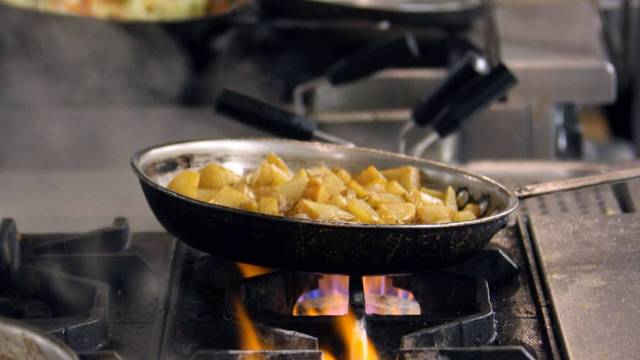Savor Authentic Oriental Food With a Pan-Asian Spin for a Cooking Adventure
Embarking on a culinary journey through authentic Eastern cuisine, improved with a Pan-Asian twist, supplies an unique possibility to check out the rich tapestry of tastes that specify the region's diverse cooking traditions. As you ponder these tempting meals, think about the social stories and historical impacts that shape them, each bite offering a tale waiting to be discovered. best asian restaurant Islamabad.

Checking Out Pan-Asian Flavors
In the realm of worldwide gastronomy, Pan-Asian cuisine stands apart for its remarkable diversity and the harmonious interplay of flavors from numerous Asian societies. This culinary strategy celebrates the abundant practices and distinct active ingredients discovered throughout the continent, creating a tapestry of preferences that is both satisfying and interesting. Secret to Pan-Asian cuisine is its capability to stabilize contrasting tastes-- pleasant, salty, spicy, and sour-- while highlighting the freshness and top quality of each ingredient.
From the umami-rich soy sauce of Japan to the intense chili peppers of Thailand, Pan-Asian cuisine uses an extensive combination of tastes. These elements are usually integrated in creative means, enhancing meals with layers of intricacy. For example, the usage of fragrant herbs such as lemongrass and cilantro, typical in Vietnamese and Thai food, includes a refreshing brightness to dishes, while the incorporation of coconut milk provides a velvety, rich structure.
The emphasis on fresh produce and aromatic flavors guarantees that each meal is not just a banquet for the taste buds yet also for the senses. Pan-Asian food welcomes restaurants to begin on a cooking journey, checking out the large and varied landscapes of Oriental gastronomy with every bite.
Fusion Dishes to Try
While Pan-Asian food is celebrated for its typical flavors, the modern-day culinary landscape is significantly embracing combination dishes that blend these timeless aspects with impacts from other regions. This cutting-edge method not just honors the rich heritage of Oriental cookeries but likewise presents unique taste experiences that attract modern palates.
An archetype of such a blend dish is the Korean-Mexican taco, where marinaded bulgogi beef is covered in a cozy tortilla, topped with kimchi and a hot gochujang-infused salsa. This mix marries the strong, savory flavors of Korea with the lively, fresh components of Mexican cuisine. Likewise, sushi burritos have actually acquired appeal, amalgamating the fragile virtuosity of Japanese sushi with the hearty, hand-held convenience of a burrito, usually featuring combination components like tempura shrimp and avocado with a drizzle of wasabi mayo.
An additional notable dish is Thai curry ramen, which instills the luscious, fragrant seasonings of Thai curry right into the soothing broth of standard Japanese ramen, producing an unified mix that entices the detects. These fusion dishes extend beyond mere novelty; they represent a culinary dialogue between societies, urging expedition and development in the globe of Pan-Asian food.
Essential Ingredients and Flavors
To absolutely value Pan-Asian cuisine, one must understand the essential active ingredients and flavors that create its structure. This varied culinary style attracts from an abundant tapestry of Asian traditions, using a harmonious mix of tastes and structures.
Aromatic components are essential, with garlic, ginger, and lemongrass being common across numerous Pan-Asian recipes. These active ingredients supply a fragrant base that boosts the complexity of tastes. Spices such as celebrity anise, cardamom, and cinnamon introduce heat and white castle near me character, resembling influences from areas like China and India.

Cooking Techniques and Tips
Grasping the art of Pan-Asian cuisine needs knowledge with its distinct food preparation strategies, each adding to the dynamic tapestry of flavors this culinary custom is commemorated for. Central to these approaches is the stir-fry, a quick food preparation technique that preserves the nutritional integrity and vibrant colors of components. Using a frying pan, the stir-fry approach enables even warm circulation, important for accomplishing the particular texture check over here and flavor balance of Pan-Asian recipes.
One more basic strategy is steaming, especially common in Chinese cuisine. This gentle technique maintains the natural tastes and nutrients of active ingredients, making it excellent for fish and shellfish and veggies. Dumplings, a cherished staple, commonly benefit from steaming, leading to soft, succulent textures.
Cooking, likewise important, imparts smoky depths to dishes such as Oriental bulgogi or Japanese yakitori (asian restaurant isb). This technique usually includes marinating ingredients, enabling tastes to penetrate deeply prior to cooking over an open flame or warm plate
Finally, mastering the art of stabilizing flavors-- pleasant, sour, salty, bitter, and umami-- is important. Properly layering these components can elevate a recipe from common to extraordinary, supplying a complicated and pleasing culinary experience that personifies the significance of Pan-Asian cuisine.
Eating Experiences Worldwide
Across the world, Pan-Asian cuisine uses an unequaled dining experience, commemorated for its abundant tapestry of flavors and lively presentations. This culinary sensation has gone beyond social limits, recording the hearts and palates of food lovers worldwide. In cosmopolitan cities like New York, London, and Sydney, Pan-Asian dining establishments act as melting pots where cooking traditions from Thailand, Japan, China, and beyond merge, providing diners check with a diverse mix of recipes that highlight the region's variety.
The global charm of Pan-Asian food depends on its capacity to offer both authenticity and advancement. Cooks skillfully marry traditional ingredients such as lemongrass, soy sauce, and miso with contemporary techniques, resulting in dishes that are both refreshingly new and familiar. This blend permits restaurants to start a culinary journey that respects heritage while welcoming modernity.
Furthermore, eating experiences are raised through thoughtfully created settings that reflect the ethos of Pan-Asian appearances. From minimal Japanese-inspired insides to dynamic Thai-themed spaces, each restaurant offers an unique atmosphere that enhances the culinary offerings. Consequently, patrons are not just taking in a meal but partaking in a social experience, making Pan-Asian eating a really global sensation.
Final Thought
The exploration of Pan-Asian food uses a profound understanding of the intricate interaction of tastes and culinary customs throughout Asia. By embracing blend meals such as Thai curry ramen and sushi burritos, the culinary trip not only highlights the adaptability of typical components but additionally showcases ingenious modern techniques. This gastronomic adventure, enhanced by necessary seasonings and cooking approaches, gives an one-of-a-kind possibility to value the multiculturalism and cooking creativity that specify Pan-Asian cuisine on an international scale.
Getting started on a culinary trip through authentic Oriental food, enhanced with a Pan-Asian spin, offers a special opportunity to check out the abundant tapestry of flavors that specify the area's diverse cooking traditions.In the world of international gastronomy, Pan-Asian cuisine stands out for its impressive diversity and the unified interplay of flavors from numerous Asian cultures. Secret to Pan-Asian food is its ability to balance different tastes-- sweet, salty, spicy, and sour-- while highlighting the quality and top quality of each component.
